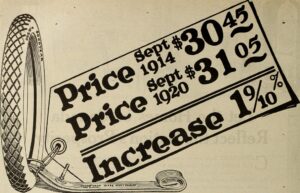How To Increase Prices Without Losing Customers

How To Increase Prices Without Losing Customers
Understanding the Need to Increase Prices
When A Price Increase Is A Must – Why it Matters And How To Avoid Losing Customers
Importance of Maintaining Profitability and Sustainability
Addressing Common ‘Customer Loss’ Fears

Giving Ample Notice: The Key to Minimising Customer Disruption
The Power of Plenty: Why Notice Matters
Early Birds Catch the Worms: How Early Communication Helps Customers Adjust
Tips for Giving Price Increase Information to Customers
Choose the Right Communication Channel
Use Plain Language
Highlight the Value
Offer Options, if Possible

6 Tips To Increase Prices Without Losing Customers
The Process of Increasing Prices: Let’s Get Down to Business
Breaking it Down: Step-by-Step Process for Price Increase
Once you’ve decided it’s time to raise those prices. And boost your business’s financial mojo. There’s a few things to do. Here’s a simple breakdown of the process to guide you on your quest for higher profitability.
1. Assess the Current Pricing Structure and Market Conditions
Take a good hard look at your existing pricing model. Evaluate your costs, profit margins, and how your prices stack up against the competition. Getting the price right is critical. If you go to high, you’ll never win another customer. Get it wrong and you’re leaving money on the table.
Consider using a price consultant.
And keep an eye on the market trends. Try to spot customer buying patterns to make sure your price increase is both timely and justified.
2. Determine the Optimal Price Adjustment Percentage
Crunch those numbers. Calculate the sweet spot that aligns with your financial goals and market dynamics.
Consider factors like inflation, cost fluctuations, and the added value you offer compared to your rivals.
Finding the perfect percentage will help you strike the right balance between profitability and customer acceptance.
3. Establish a Timeline for Implementation
Timing is everything, they say. Plan when the price increase will take effect. Then allow yourself enough time to communicate the changes to your customers. A well-thought-out timeline ensures a smooth transition. It will give customers the chance to adapt without feeling rushed or caught off guard.
4. Prepare a Clear and Concise Message for Customers
Communication is your secret weapon. Craft a message that explains the price increase in plain, customer-friendly language. Clearly outline the reasons behind the change. Make a point in showing them the continued value you provide. And address any concerns they may have. Remember, simplicity and transparency are the keys to winning hearts and minds.
Practical Advice for Navigating Each Step
Let’s dive into some practical tips to help you navigate this price increase journey like a seasoned pro:
Research Competitors’ Pricing Strategies
Knowledge is power, my friend! Take a peek at what your competitors are charging. Are they in line with industry standards or blazing their own trail? This information will help you position your pricing strategy and understand how your price increase will be perceived by customers.
Test Price Increases on a Smaller Scale
Dip your toes in the water before diving in headfirst. Consider implementing your price increase on a smaller scale first. Perhaps with a select group of customers or specific products/services. This way, you can gauge customer response, gather feedback, and fine-tune your approach. When you have a good idea you can roll out the changes to your entire customer base.
Monitor Customer Feedback and Make Adjustments
Stay in tune with your customers’ pulse. Listen to their feedback, whether it’s through direct communication, surveys, or social media channels. Be open to making necessary adjustments based on their responses.
Remember, customer satisfaction is key! And their input can help you refine your pricing strategy for maximum success.

Tips for Nurturing Customer Relationships During a Price Increase: Keep the Love Alive!
Open and Transparent Communication: The Way to Go
Let’s get real. When it comes to increasing prices, honesty is the best policy. Be open and transparent with your customers about the changes.
Explain the reasons behind the price increase and how it will benefit them in the long run.
By fostering an environment of trust and clear communication, you can strengthen your customer relationships.
And reduce any potential pushback.
Incentives and Value-Adds: Sweeten the Deal
Okay, we get it. Nobody likes a price hike.
But here’s a little secret sauce to soften the blow.
Offer incentives or value-adds alongside the increase.
Give your customers something extra that adds value to their experience or helps them save money in other areas.
It could be a loyalty program, exclusive discounts, or even freebies.
By providing additional perks, you show your customers that you appreciate their loyalty and are committed to their satisfaction.
Successful Customer Retention Strategies: Learn from the Pros
Want to know how the pros do it?
Take a page from the playbook of successful companies that have successfully navigated price hikes while keeping their customers happy.
One approach that big food chains like KFC use is to offer special loyalty discounts for long-standing customers.
Another strategy is to bundle products or services together. It creates irresistible value for customers even though it has a slightly higher price point.
Other Things to Think About and Best Practices: Let’s Raise the Bar!
A. Delivering Value: The Golden Rule
Here’s a fundamental truth. Customers will pay for value.
It’s not just about the price. It’s about the overall experience and value they receive from your business. The answer is simple, continuously deliver value. You can do it through exceptional products, outstanding customer service, and innovations that make their lives easier. When customers see the value they’re getting, they’ll be more accepting of a price increase.
B. Alternative Pricing Strategies: Mix It Up!
It’s time to think outside the box, my friends. Consider alternative pricing strategies that cater to different customer segments.
Explore tiered pricing options based on features or levels of service.
Offer bundled packages that combine multiple products or services at a discounted rate.
These creative approaches give customers choices and allow them to find a pricing option that suits their needs and budget.
C. Write The Frequently Asked Questions and Concerns That Customers Have: Let’s Address ‘Em!
Ah, the good ol’ FAQs.
Anticipate the questions and concerns your customers might have about the price increase.
Are they worried about the impact on their budget?
Will they still receive the same level of quality and support?
Address these concerns head-on through proactive communication.
Create a clear FAQ section on your website or send out an email addressing these common queries.
By proactively addressing their concerns, you can alleviate any apprehensions and maintain customer satisfaction.
Summary – How To Increase Prices Without Losing Customers
By implementing these tips and best practices, you’ll nurture your customer relationships and weather the storm of a price increase with grace and finesse.
Remember, it’s all about open communication, providing value, and being creative in your pricing approach.
Be sure to follow the tips we outlined in the article.
Things like:
The Power Of Plenty: Give Them Plenty Of Notice
Early Birds Catch The Worms: Early Communication Helps Customers Adjust
Choose The Right Communication Channel
Use Plain Language
Highlight The Value The Customers Will Receive
Offer Options, If Possible
So, go ahead and show your customers some love while securing the growth and success of your business.





